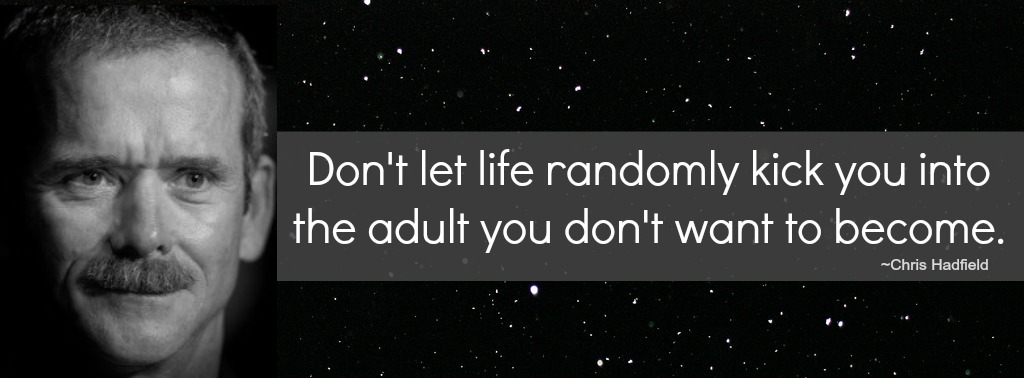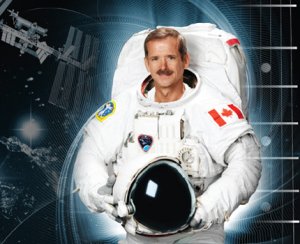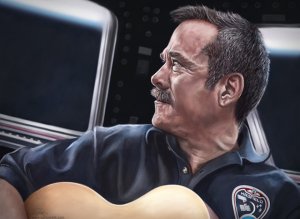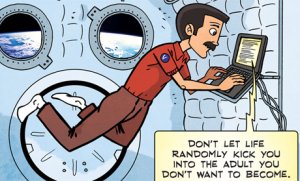

Science gives us the tools that we need in order to observe the heavens and understand the motion of the stars. It allows us to capture images of distant galaxies, witness the intricate dance of massive celestial bodies, and explore the inner depths of nebulae—the birthplace of stars and of solar systems like our own. And it does so much more…
Smallpox is one of the deadliest known diseases; it plagued humanity for thousands of years. Although the overall death toll is unknown, it killed over 300 million people in the 20th century alone. And it was completely eradicated by vaccinations. The last natural occurring case was in 1977. Science did this. Quite literally, science is life. So why do so many perceive it as something that is cold and dead? If science is able to accomplish such amazing feats, why is it so difficult to get people interested in research? Why do teachers have such a hard time engaging students in scientific study?
Ultimately, it seems a large part of the problem is that, to many people, science does not reveal the inner workings of the cosmos or provide new windows through which they can glimpse the Earth. Instead, students encounter lackluster and overcrowded classrooms, overtaxed and overworked teachers, underfunded schools, and deplorable grading systems that focus on regurgitation instead of exploration and critical inquiry. The main question then? What can we do to reverse this troubling trend?

This seems like a mighty question. But the answer is really rather simple, and we’ve to look no farther than Chris Hadfield. He is an educator in the truest sense of the word. During his time on the International Space Station Hadfield went out of the way to engage the public. He showed us what happens when you cry in space, how difficult it is to ring out a washcloth (and get it wet to begin with), how awkward it is to get sick in space, and the various difficulties that arise what you are forced to use the bathroom without gravity. More than that, he showed us our world anew.
Hadfield regularly posted images of the Earth from the ISS. He even took requests, zeroing in on our most cherished places and showing us what they look like when you are 220 miles (350km) above the surface of the Earth. He took time out of his day to speak with classrooms and answer students’ questions. He posted wacky clips that showed us that nuts look like they are alive in space, and in his latest antics, he performed an amazing rendition of David Bowie’s “Space Oddity.” Of course, it wasn’t all fun and games. At one point, when the ISS started leaking ammonia , he tweeted all of the details related to what caused the problem and how it would be fixed (and also told us that, during the subsequent emergency spacewalk, the astronauts could not whistle because the air in their suits was held at too low a pressure).
This is Chris Hadfield: A man who is able to present science in a way that captures the interest of an entire generation–indeed, an entire planet.

And he gave great advice. During a Q&A on Reddit, one student asked if Hadfield had any advice for an aspiring astronaut. He replied:
“Decide in your heart what really excites and challenges you, and start moving your life in that direction. Every decision you make, from what you eat to what you do with your time tonight, turns you into who you are tomorrow and the day after that. Look at who you want to be, and start sculpting yourself into that person. You may not get exactly where you thought you’d be, but you will be doing things that suit you in a profession you believe in. Don’t let life randomly kick you into the adult you don’t want to become.”
He reminded us that science is more than just dry facts and figures…he helped us to see beyond our computer screens and showed us the universe. In short, he is the epitome of what every scientist and educator should be.
The Journey Begins…

Image courtesy of NASA
On December 21, 2012 Hadfield and his team docked with the ISS after a two-day flight aboard a Soyuz TMA-07M, and began their mission. At the end of his mission, he handed over command of the International Space Station to Russia’s Pavel Vinogradov, and returned home. It was a bittersweet moment as Earth welcomed home a great man and space bids him farewell. However, it was a long journey to get to that moment.
Raised on a corn farm in southern Ontario, Hadfield was interested in flying from a young age. As an Air Cadet, he won a glider pilot scholarship at age 15 and a powered pilot scholarship at age 16. He joined the Canadian Armed Forces in May 1978 and underwent basic flight training, for which he was named top pilot in 1980. In 1983, he was the overall top graduate from Basic Jet Training. In total, Hadfield has flown over 70 different types of aircraft. He was the voice of Mission Control to astronauts in orbit for 25 space shuttle missions. Hadfield retired as a Colonel from the Canadian Air Force in 2003, after 25 years of military service. Then, in June of 1992, Chris Hadfield was selected to become one of four new Canadian astronauts from a field of over 5,000 applicants. On December 19, 2012 he launched aboard the Russian Soyuz. On March 13, 2013 he became the first Canadian to command a spaceship as Commander of the ISS.
He was on the ISS for five months. Across twitter, facebook, and tumbler more than a million people followed him on his journey. He posted videos, blogs, images, and did whatever he could to engage people back home. The last image that he posted while on the ISS is shown below–the Sun over the Earth. Along with this image, Hadfield tweeted, “Spaceflight finale: To some this may look like a sunset. But it’s a new dawn.” And so, of course, his journey is not quite over. With any luck, it won’t be for a long, long time…

Edited by: From Quarks to Quasars